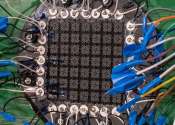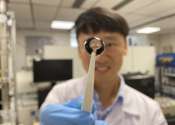A high efficiency LED based on copper–iodide clusters
A team led by Prof. Yao Hongbin from the University of Science and Technology of China (USTC) developed a high efficiency, high brightness warm white light-emitting diode (LED) based on copper-iodide cluster hybrids. Their ...
Mar 25, 2024
0
13









